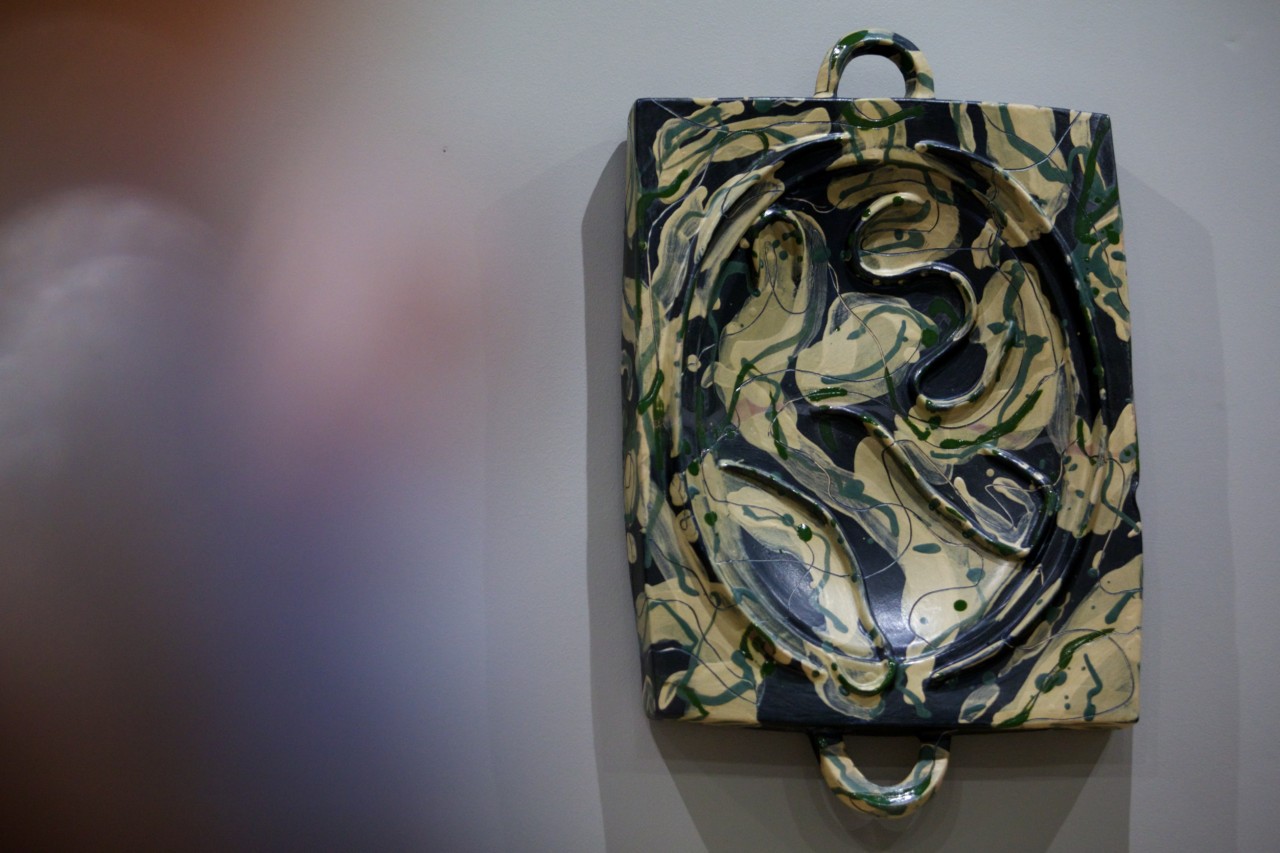


Installation view of Alison Britton, 'Making It Up' (2018) focus on 'Trencher' (2018) image © Philip Sayer, courtesy of Marsden Woo Gallery
Before the year is quite out I want to direct your attention to the latest exhibition of works by one of this country’s most distinguished ceramicists. Marsden Woo Gallery is showing ten new works, made in the course of 2017 and 2018, that return to a more modest in scale than in previous years.
Alison Britton was one of a group of ceramicists in the late 1970s who effected a generational rupture with the modernisms of Hans Coper and Lucie Rie, adopting a self-consciously Postmodern register in their practice. Together with figures such as Carol McNicoll, Jacqueline Poncelet, Glenys Burton and Elizabeth Fritsch, Britton uncoupled the vessel form from its revered traditions, to explore the jug, charger and vase as ‘found objects’, ur-forms with metaphorical potentiality.
Throughout her career Britton has interrogated the interstices between the domestic and public spheres in which ceramics can operate, between the medium as painting and as sculpture, its dual presence as both poetic and prosaic object. Britton herself has referred to the territory as the “borders and overlaps of visual culture.” Britton’s work operates at an almost subliminal level, evoking a response to the familiarity of vessels that populate every aspect of our everyday lives, but snagging the eye with curious, purposely non-functional features. Jugs may be denatured by the addition of two spouts. Indentations that might be construed as handles are eccentrically, one might almost say expressionistically placed. Britten’s pots have a distinct demeanour – they can appear, like the barrel-chested Vagabond, 2018, to stretch out their arms in invitation, or throw them up in surprise, like Rogue, 2018. The connection to the elemental idea of the human clay and the body as vessel hovers close by.
In discussing Picasso or Miró, one might refer to personnages, or personatges, to identify objects with some kind of anthropomorphic quality. With regards to Britton’s work I find it more useful to consider the engagement with painting in relation to these modernist forebears. Picasso’s painted ceramic plates were disparagingly referred to as Picassoettes – a pun on the French ‘assiette’ for plate, and a derogatory feminisation of his name. In the current show, Britton has taken the charger form and for the first time hung it on the wall. The flatter surfaces of this shape offer a plane across which to explore an independent painted composition. It is not that it is unusual to hang a plate or charger on the wall, but these works do stretch self-consciously towards the condition of painting.
The painted motifs on the jugs Earthwork, 2018 and Piper, 2018 also operate less to emphasise or describe form than to disrupt it. They put me in mind of the polychrome sculpture of Britton’s teacher at the RCA, Eduardo Paolozzi, whose psychedelic camouflage painted sculptures of the 1960s – such as Hamlet in a Japanese Manner, 1966 – jubilantly deconstructed physical form with pattern.
There is a loose, sensual quality to the mark making that recalls some work of painters such as Peter Lanyon or William Scott, and the paler palette even seems to nod toward the Omega Workshops. While some pieces here see Britton return to an inky blue that she has not used for some time, the milky drizzles of glaze that streak the flanks of Vagabond evidence the greater appetite to allow the operation of chance that has characterised glaze work since 2012.
I have reached the outer limits of my temerity in writing about the work of one of the important and influential ceramicists of her generation. Alison Britton’s work has for decades been a sustained enquiry into the correspondences between painting, sculpture and ceramics. Her influence as artist, writer, curator and teacher runs deep and wide. There is almost no time left to see the current show, for which apologies. You will simply have to be alert to the next one.
With that I wish everyone a wonderful break and look forward to being back in 2019.
Caroline Douglas
Director
Marsden Woo Gallery, 29 Ebury Street, London SW1W 8UT. Open Tuesday-Friday 11.00-17.00. Exhibition continues until 22 December 2018. www.marsdenwoo.com